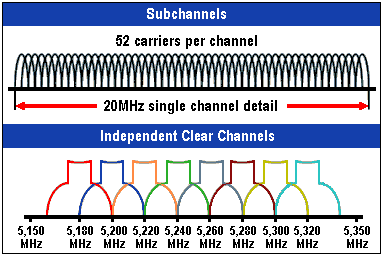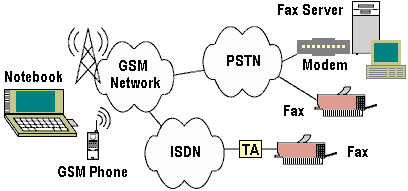HiperLAN2 is one of a number of new generation standards supporting both asynchronous data and time critical services (e.g. packetised voice and video) that are bounded by specific time delays to achieve an acceptable Quality of Service (QoS) … [Read more...]
IEEE 802.11a
While 802.11a operates in the 2.4GHz ISM (Industrial, Scientific and Medical) band, the 802.11a standard was designed to operate in the more recently allocated 5GHz UNII (Unlicensed National Information Infrastructure) band. Furthermore, … [Read more...]
Bluetooth technology
Named after a tenth-century Danish king, Bluetooth is a specification for a small form-factor, low-cost radio solution providing links between mobile computers, mobile phones and other portable handheld devices, and connectivity to the … [Read more...]
WAP Technology
Also crucial to making net access viable from mobile wireless devices is WAP, the Wireless Application Protocol. WAP is a global standard and is not controlled by any single company. Ericsson, Nokia, Motorola, and Unwired Planet founded the WAP … [Read more...]
3G Technology
Finally, there's the ultimate goal of third generation (3G) services, whose principal objectives are the provision of greater user capacity, higher data rates and - hopefully - worldwide compatibility. The promise of new radio spectrum is a … [Read more...]
GPRS Technology
The difficulties the international industry standard bodies have had in approving all of the necessary standards has led to a delay in the deployment of 3G wireless systems. To lessen the impact of these delays, General Packet Radio Service … [Read more...]
IEEE 802.11n
Demand for wireless LAN hardware experienced phenomenal growth in the years following the ratification of the IEEE 802.11a standard in the summer of 1999, evolving quickly from novelty into necessity. The initial expansion was driven primarily by users connecting notebook … [Read more...]
GSM Technology
The GSM network can be divided into four main parts: The Mobile Station, which is carried by the subscriber The Base Station Subsystem, which controls the radio link with the Mobile Station The Network and Switching Subsystem, the main part of which is the Mobile … [Read more...]


